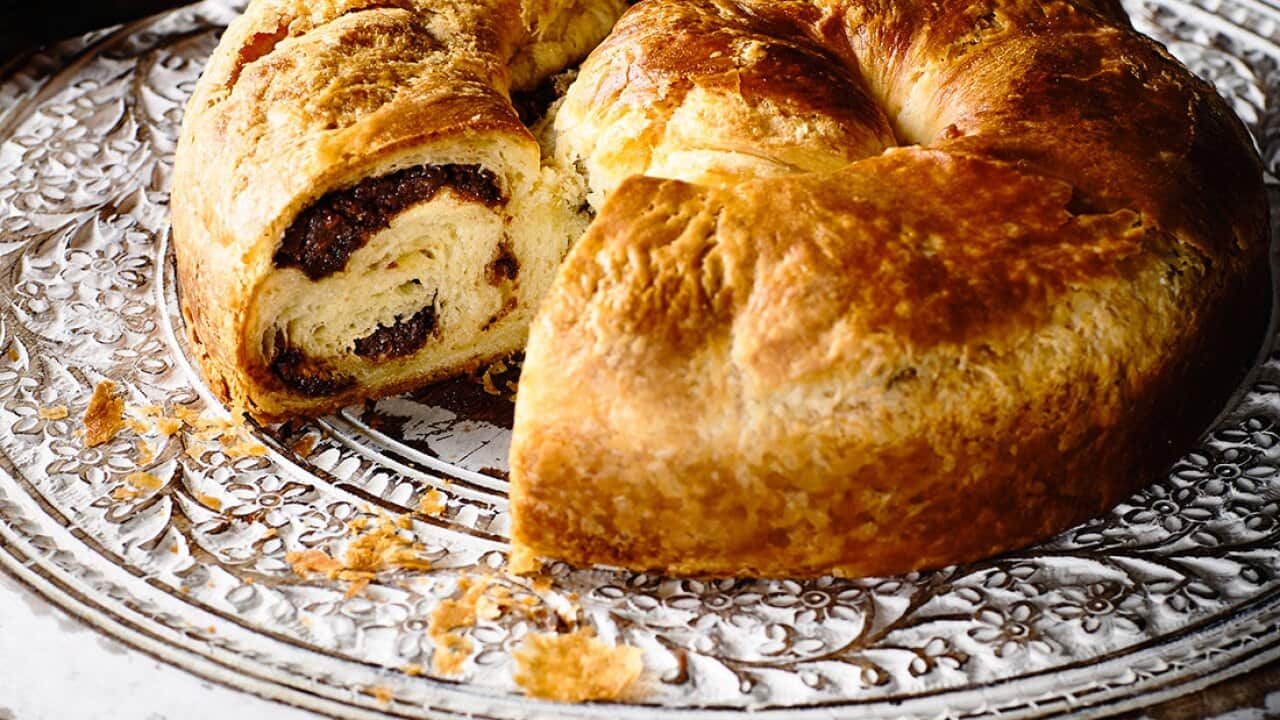A visit to Nonna's always started with a kiss on her cheek and then a peek in the cake box.
I knew there would be one of three things prepared for our arrival: , brioche or a nut-filled cake.
Dad preferred the crostoli: thin pastry twirls deep fried and dusted in icing sugar. I was all about the cake: a soft, sweet, bread-y mix filled with nuts and baked in a bundt tin. It was never a round cake tin, always the one with the distinctive hole in the middle, but I never thought to ask why.
I didn't ask Nonna anything about it, because I naively assumed it wasn't important.
In Italian delis and , I would always see crostoli and brioche, but never the cake – so I assumed it was something she’d made up. I was born in Australia, but both my parents migrated from Italy when they were very young. Dad is from the north, mum from the south. If they had stayed in Italy, so great is the divide between the "lazy southerners" and the "snobby northerners", that they would never have met.
I was born in Australia, but both my parents migrated from Italy when they were very young. Dad is from the north, mum from the south. If they had stayed in Italy, so great is the divide between the "lazy southerners" and the "snobby northerners", that they would never have met.

A visit to Nonna often involved crostoli. (Brett Stevens) Source: Brett Stevens
Everything is different, from the language to the culture to the food. Which is why I never wondered about finding Nonna's cake in Australia, because what we consider to be Italian food here is largely influenced by southern Italian cuisine.
The closest I ever came to it was the chocolate kugelhopf at the bundt shape, the marbled black and white swirls in every slice, the yeastiness of it – but it was too high and Nonna didn't use chocolate.
And then I travelled to Slovenia. At , sitting at the top of , eating the local delicacy , a cream cake not dissimilar to a vanilla slice, I talked to our guide Barbara about Slovenian cuisine and she described the national dessert, . A yeast-based cake where the dough is rolled out thinly, topped with a walnut paste, maybe pine nuts or raisins, then rolled into a log and baked in a bundt tin.
It was Nonna's cake.
My brain flashed to her fridge, where there would always be glass jars of walnuts and pine nuts, even though I never saw her eating them.
When I had a slice, I cried. I hadn't eaten it in nearly 20 years.
I was too young to know to ask for the recipe when she was alive and too immature to realise that the cake was more than just a cake. It was part of her story, which makes it part of mine.
It wasn't as bready as Nonna's, but everything else was there – the flavours, the spices, the nuts, the shape.
I thought about the other dishes I had eaten on this trip and how they were just like Nonna's; the beef broth with pastina, cooked with meat and the preference for veal.
I've always thought of myself as Italo-Australian. Growing up, we spoke Italian, we ate and I went to Italian school on Saturday mornings. It was just what my family did and who I was. Occasionally, mum would tease Dad for being more Slav than Italian for his preference of butter instead of olive oil on bread, for potato over pasta or crostoli instead of but I never understood it.
Slovenia made me see my family in a new light.
I was too young to know to ask for the recipe when she was alive and too immature to realise that the cake was more than just a cake. It was part of her story, which makes it part of mine.
Dad's mum, my Nonna, was born in the between the Gulf of Trieste and the Kvarner Gulf when it was Italian, but now that land is split between Italy, Slovenia and Croatia. We still have family in a small border town, , and on this trip I discovered it was by barbed wire during the war – half Italian, half other.
An arbitrary line that determined who you were.
Nonna had to pick a side. She chose to be Italian and brought that identity with her to Australia, but she didn't leave her Slavic sensibilities behind and it came through in her cooking.
Slovenia was a revelation for me. It made me realise that my cultural roots aren't as clearly defined as the dark trail of nut paste that runs through a slice of potica.
Sweet relief

Poppy seed sweet bread (potica)








